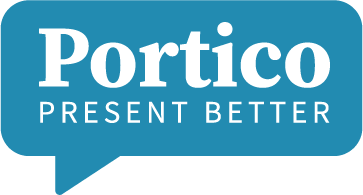We are always working towards helping executives to present better. The other day while reading the Wall Street Journal, I came across a theatre critic’s lament over the increasing length of operas (a Wagner production at the Met is slated at 5 hours and 15 minutes).
He cited an oft- used plea, “If it can’t be good, let it be short.”
This rule applies to giving better presentations. In fact, I’d modify it a bit, “If it is good, it is also short.”
Why try to have a short presentation?
Your audience’s attention spans are remarkably short.
They will tune out of you’re not demonstrating that you have something of real value to add, whether providing insight to help them make a decision or solve a problem, or learning something new. And once you’ve earned your audience’s interest, you need to work to keep it.
Yet getting to “short” can be hard work.
When your presentation is held to time limitations, you’re forced to clarify what’s most important. You probably need to argue for including certain points while listening – intently and actively – to your colleagues’ perspective. It’s during these conversations that clarity emerges and you’re all more likely to understand what it is that you want to get out of the presentation. Once you’re able to focus on that goal, it becomes much easier to prioritize and remove supporting messages and examples.
If you have unlimited time and bandwidth to get your point across, you don’t have to make any hard decisions. You can appease every manager and direct report by including their idea or perspective. If you’re creating the presentation on your own, you can cede to every “good idea” and data set that pops into your mind.
In the process of appeasing, you’re also overwhelming — and losing — your audience.
“But I have more to share! They need more detail to fully understand the issue.”
You are in control of your presentation.
That’s where your leadership comes into play. You’re making the tough decisions about what’s most important for your audience rather than asking them to cull through all of the data and messages.
You can always fill your appendix with back-up slides and gantt charts to prepare for any follow-up questions. But do your audience the courtesy of selecting what’s most relevant for them at that particular point in time.
If your peers come away from your meeting feeling as it has been a valuable use of their time, they will come back to you with other questions. Or, in the case of a theatre production, buy more tickets for other performances!
A core service we provide to business executives at Portico PR is to help executives present better. Whether it is a presentation deck to the board of directors, an internal meeting or as a keynote presenter, we dissect your presentation content, work with you to find the true core meaning, and rebuild keeping length in mind, while making sure your point is getting across.



